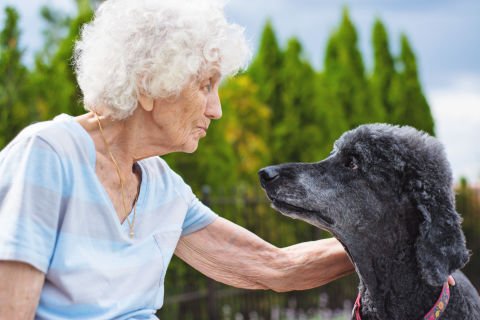Cohousing offers an alternative to senior housing
Some Australians are embracing a style of living that combines privacy and a sense of community.

Key Points
- Cohousing has become a popular option around the world.
- It gives residents both privacy and a sense of community.
- It can reduce costs and environmental impact.
Determining where to live as we get older is a daunting decision that’s been made even more difficult by recent problems in the aged-care sector.
For this and other reasons, many seniors are reconsidering their options and seeking new housing solutions.
International research – and the personal experiences of a growing number of Australians – suggests collaborative housing, or cohousing, could be the answer.
The American Association of Retired Persons (AARP) describes cohousing as “a form of residential development designed to emphasize community interaction while retaining and respecting individual privacy”.
The growing popularity of cohousing for seniors in the United States reflects a need the world over: the desire to live independently yet among friends or active neighbours who look out for each other.
At the core of collaborative living is people coming together to share in the design and running of their small community, with an emphasis on getting both the built and social environments right.
This can range from groups of people with the skills, time and inclination to coordinate everything themselves, to teaming up with a developer or community housing provider.
With cohousing, residents have a private dwelling but can also access benefits such as a common room and kitchen, so the community can share a meal, along with a garden, library or workshop. Some communities offer guest accommodation and even shared vehicles.
Cohousing advocates see it is an attempt to recapture the positive aspects of village life, but in a modern context.
Cohousing originated in Denmark in the 1960s, and spread worldwide, but has been slow to take off in Australia, except for a small number of “eco-villages” and “intentional communities”.
This may be changing however, with many Australian cohousing groups working to realise projects, some of them explicitly focused on addressing the needs of older people.
Women in Cohousing (WinC), for example, is a group of women aged from 50 to 80 who have purchased land in Castlemaine, Victoria and plan to build a village of 30 units, with a common house, workshop and gardens.
WinC’s aim is to create “a community based on collaboration, sustainability, accessibility, and a blend of opportunities for privacy and for social interaction”.
Cohousing has the potential to support seniors to:
Age in place in a community to which they feel connected.
Avoid feeling isolated by ensuring they are part of a supportive community.
Offer a sense of purpose through shared governance.
Provide opportunities for informal care and support from other residents.
Reduce costs and environmental impact by sharing resources and equipment.
Australia has a tradition of outright home ownership, meaning seniors are assumed to have zero housing costs.
As Australians are now entering the housing market later in life – if at all – there is a need to diversify housing options for seniors beyond ownership and developer-led retirement living.
A recent National Seniors Australia members survey showed that ageing in place – remaining in your current home and community – is still a priority.
However, many once-stable neighbourhoods are now in a state of flux. Neighbours move, and businesses and services do not always endure. Cohousing offers an alternative mode.
As the peak body for collaborative housing, Cohousing Australia plays a role in connecting people and coordinating research and advocacy to help overcome some of the legal and financial barriers.
It can offer guidance on legal and banking matters for seniors who are “asset rich but income poor”.
It also seeks to influence retirement living providers who are developing new housing models.
Cohousing Australia is launching a knowledge circle, described as “a friendly, online forum” for those interested in the subject. Contact Cassandra for details.








